Enid Yandell
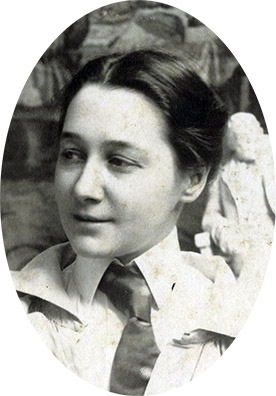
Enid Yandell (1869-1934) was the most well-known of the three women sculptors whose work was featured on the grounds of the Exposition as part of the "sculpture plan." After attending college, she went on to study at the Cincinatti Art Academy. When the Chicago World's Fair was in planning, she secured positions as a worker for Lorado Taft, executing sculptures under his direction. She and the other young women working for him were called "the white rabbits." She also worked with Philip Martiny there; both men were well known and she learned a good deal from her time in Chicago. Afterwards, she studied under Karl Bitter in New York and then went abroad to work with Frederick MacMonnies in Paris. She gained her reputation in the U.S. during the years before the Pan-American Exposition by sculpting a 9 foot statue of Daniel Boone for the Kentucky Building at the 1893 World's Fair and a 42 foot statue of Athena for the 1897 Tennessee Centennial, among other commissions. In 1899, she and Bessie Potter were elected to the National Sculpture Society.
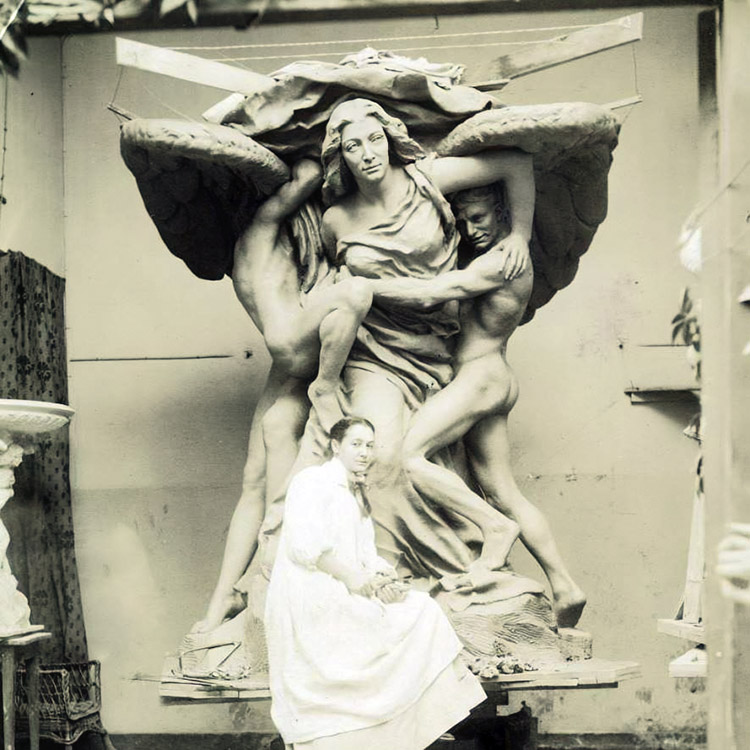
Yandell posing with her clay model. Image source: Filson Historicla Society
For the Pan-American Exposition grounds, she created what is possibly her most feminist monument, the "Struggle of Life." She had entered a competition with 17 other entrants, all male sculptors, and won the commission in 1898 to execute this fountain in memory of Carrie Brown, late wife of Italian diplomate Paul Bajnotti. She said that she tried to express "the attempt of the immortal soul within us to free itself from the handicaps and entanglements of its earthly environment. It is the development of character, the triumphs of intellectuality and spirituality I have striven to express."
There are three nude male figures, representing duty, passion, and avarice who are attempting to hold back the female figure who strains to free herself. It is an allegorical work showing some violence in the struggle. (Many have compared it to Rodin's style, which was an influence on Yandell and her contemporaries.)

Location of the fountain. Image source: Pan American Art Handbook
The sculpture at the Exposition was a plaster duplicate and was installed in the center of the Rose Garden, adjacent to the Women's Building. It cannot be confirmed if the fountain was fully functioning during the Exposition. The final cast version had 234 jets with a pinnacle spray on top.
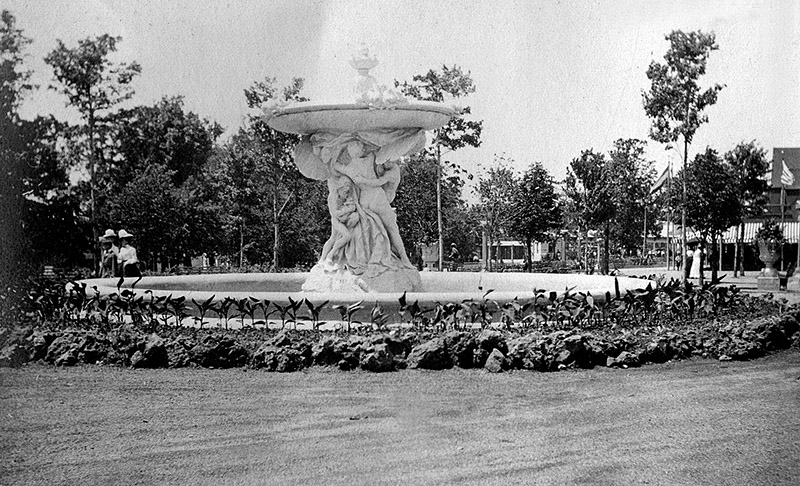
Visitor photo of the sculpture installed at the Exposition. Image source: Buffalolore
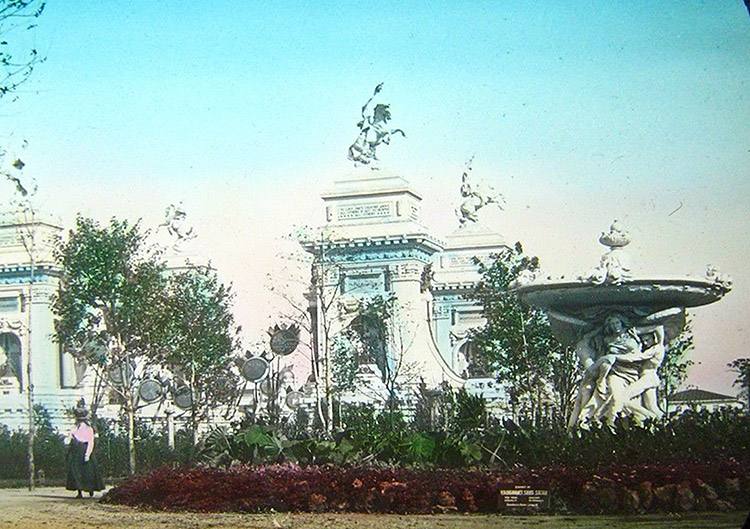
A hand colored glass slide of the fountain. Image source: internet
In 1902, the sculpture was cast in bronze by the Gorham company in New York. The base was done in granite.
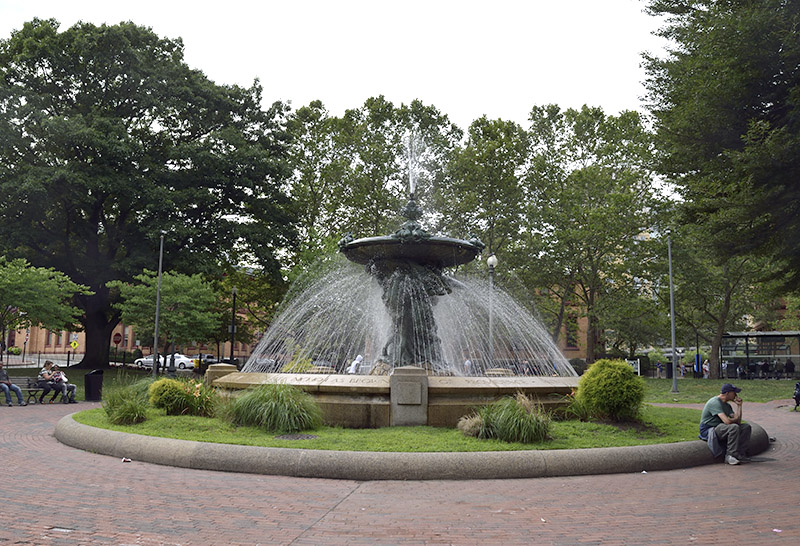
Photo of the fountain today in Burnside Park, Providence, Rhoad Island. Image source: author photo
After the Pan-American, Yandell continued to develop her skills and execute numerous fountains, busts, and figures, dividing her time betwee the U.S. and Europe. She also opened an art school in Massachusetts in 1908. She was a suffragist and, when World War I began, she set aside her art to assist in France with the the car of war orphans and supporting families. After the war, she returned to the U.S. and worked for the Red Cross. The experience deeply affected her and by 1925 she had ceased sculpting entirely.
Today, Enid Yandell's memory is preserved and celebrated in her hometown of Louisville, Kentucky. And the Carrie Brown Fountain in Providence has been conserved for the continued enjoyment of Providence residents and visitors.